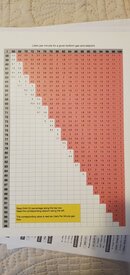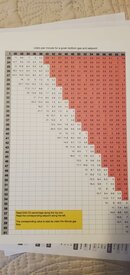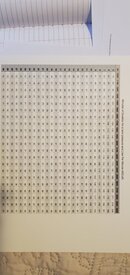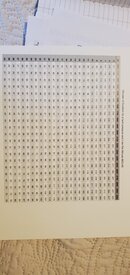Bartlomiej
Registered
I have a chance to have refoundation for the course for Horizon (otherwise I would continue OC and same day maybe move to CCR). So please just answer my question and do not say "do not go into Horizon"  .
.
1) What is the buoyancy of the deco version without tanks? I would calculate if I need to bring more weight when in twin.
2) In loop is always gas +-1% like in tank? My calculation: permanent addition 5l/min of EAN22 ->1,1 oxy l/min, during "normal" diving usage is 0.6 oxy l/min.
3) The suggested time for scrubber is 3h, it is SCR with 5 l/min donations, so if I use EAN22 (lowest recommended) it adds 5*0.22=1.1 l/min, normal usage for human is 0.6, so machine would not need to add more than this 5 l/min. 5*l/min * 180 min = 900l. 900l+ 25% =1200l. 1200l under the pressure of 200 bar gives 6l tank. 20min at 40m gives 20m deco, so deco tank and the bottom tank should be not bigger than 6l for one scrubber cycle?
4) What happened if I exceed the depth 40m. Of course, HUD would be red and the computer would scream "go up", but deco will be calculated correctly, and after dive I could make next with 24h blocked computer?
5) Should I call this two tank bailout or stage ? Generally, bailouts do not power reb.
? Generally, bailouts do not power reb.
Thanks for the help .
.
1) What is the buoyancy of the deco version without tanks? I would calculate if I need to bring more weight when in twin.
2) In loop is always gas +-1% like in tank? My calculation: permanent addition 5l/min of EAN22 ->1,1 oxy l/min, during "normal" diving usage is 0.6 oxy l/min.
3) The suggested time for scrubber is 3h, it is SCR with 5 l/min donations, so if I use EAN22 (lowest recommended) it adds 5*0.22=1.1 l/min, normal usage for human is 0.6, so machine would not need to add more than this 5 l/min. 5*l/min * 180 min = 900l. 900l+ 25% =1200l. 1200l under the pressure of 200 bar gives 6l tank. 20min at 40m gives 20m deco, so deco tank and the bottom tank should be not bigger than 6l for one scrubber cycle?
4) What happened if I exceed the depth 40m. Of course, HUD would be red and the computer would scream "go up", but deco will be calculated correctly, and after dive I could make next with 24h blocked computer?
5) Should I call this two tank bailout or stage
Thanks for the help







